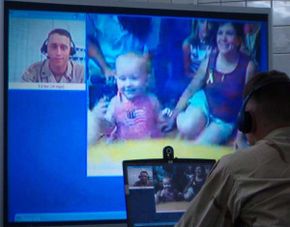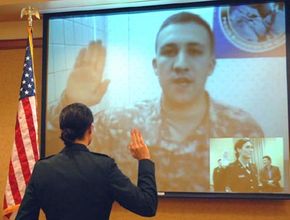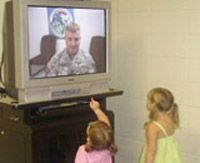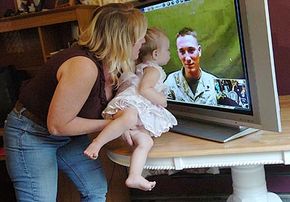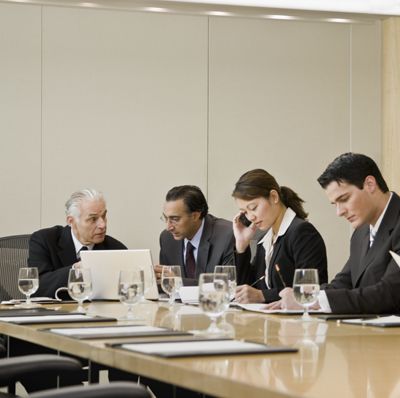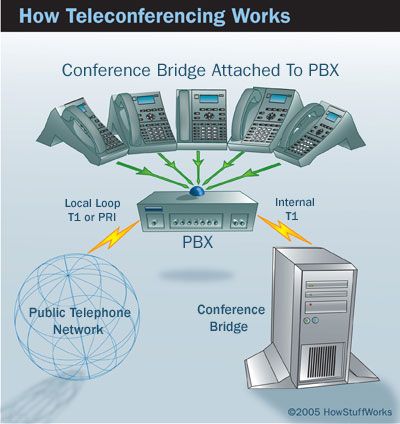For years, soldiers stationed far from home have relied on letters, packages and occasional phone calls to stay in touch with loved ones. With video conferencing technology, military personnel can connect with family members back home in real time. For example, a Navy petty officer can join his wife and share his baby's first moments. An Army private can watch her daughter's graduation. A family can share a holiday meal and open gifts with their Marine son.
Family separation is one of the most negative aspects of troop deployment, according to "How Deployments Affect Service Members," a study by the Rand Corp. Researchers surveyed and conducted focus groups with U.S. military personnel stationed in Iraq and Afghanistan in 2003 and 2004. They found that being separated from family caused higher-than-usual stress and significantly reduced individuals' intention to re-enlist.
Advertisement
Military personnel in focus groups told the researchers that phones were unreliable, often broken and very expensive. E-mail also was unreliable and difficult to access, they said, because of the limited number of computers. The Rand Corp. researchers recommended that deployed personnel be given better access to communication channels with home to help reduce the stress of family separation [source: Rand Corp].
Military video conferencing provides such a way to keep families together. In this article, we'll talk about how video conferencing works, how the military uses this technology and how families connect using video conferencing.
